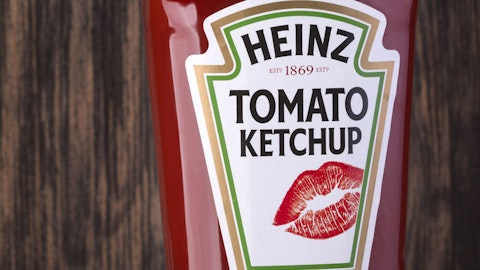Erica Eiler: Okay, great. I’ll pass the line.
Jack Sinclair: Thanks.
Operator: Thank you. Our next question comes from Mark Carden with UBS. You may proceed.
Mark Carden: Good morning. Thanks so much for taking the questions and nice quarter. So you guys noted that you’re looking to close 11 new stores following your real estate review. Are these stores being replaced ultimately by newer store prototypes and similar geographies? What were some of the local markets simply too weak to support a Sprouts longer term? And then just longer term, how should we think about additional closures in the years ahead and any potential impacts on your long-term 10% unit growth algorithm?
Jack Sinclair: Yes. Well, specifically strategically, when I got this job a few years ago now it seems a long time ago now, we set out a strategy very clearly about the smaller stores would be more effective going forward in terms of returns and what we expected to be able to deliver in terms of returns from those stores. As we’ve looked at the store portfolio, that strategy playing out really made us take a very hard look at those stores that are a little bit bigger. They’re lovely stores that were built by the previous team a little bit bigger and not the kind of, and in certain locations we picked the wrong locations, we would’ve acted sooner on these stores had it not been for the pandemic. We didn’t think it was appropriate to shut grocery stores in the middle of a pandemic in terms of giving access to healthy foods.
So the specifics on the 11 stores, you won’t see direct replacements coming in those geographies going forward because they’re probably in the wrong place and they’re probably, the leases aren’t quite where we want them to be, but going forward they’ll always be leases that we’ve got to deal with. But this is a kind of one and done, let’s clear up a big chunk of some of the stores from our strategy that we laid out three years ago. And as I say, we would probably have acted a little bit sooner on these had it not been for the pandemic. Chip?
Chip Molloy: And I’d just add as we go forward, we have a much more robust modeling. We’ve gone we instituted a new system last year. We are mitigating the risk of opening those stores. The new models give us a much better location, sort of main and main and we’re not opening up, 30,000, 40,000 square foot stores.
Mark Carden: Got it. That’s helpful. And then as a follow-up, there’s been some press that one of your largest natural organic competitors has been getting more aggressive on pricing. Are you seeing any ripple effects impacting the broader natural organic space and do you see any more likelihood of competitors becoming less rational near ahead?
Jack Sinclair: Well, we haven’t seen too much irrationality, in terms of what’s happening in our space. We’re very confident that we’ve got a strategy that we can follow and we’re sticking to our guns on our strategy. I haven’t seen a lot of volatility in pricing on outside in our direct space in the natural and organic space. We obviously watch that pretty closely. We’re very sensitive to our produce pricing and with that particular competitor that you’re outlining; we’re in a very good shape with regard to produce pricing. Overall, that’s something that we would pay a lot of attention to, but we haven’t seen anything that causes us too much to worry about right at the moment.
Mark Carden: Great. Thanks so much. Good luck guys.
Jack Sinclair: Thank you.
Chip Molloy: Thank you.
Operator: Thank you. Our next question comes from Karen Short with Credit Suisse. You may proceed.




